DDR4 Memory
The third most important feature when building a gaming pc. To put it simple, the more the better! Faster RAM is also defined by it's frequency where higher is better.
When looking for RAM consider the make and model too. Manufacturers often build systems with either unbranded RAM (this translates to cheap rubbish!) or the bottom end range of a brand. We only use Corsair RAM as it's regarded the best in the industry and has been for years. They back this up by offering a lifetime warranty with all of their RAM.
It is also worth noting that we use the correct channel configuration - For example if you choose 32GB we would use 2 x 16GB modules so that it operates in dual channel as it should. Many system builders would use a single, and cheaper, 32GB module which means the RAM would only operate single channel mode and whilst it may appear to look good on a spec sheet, it will impact the RAM performance by as much as 35%! All RAM nowadays runs in either Dual or Quad channel meaning it must be configured in equally split module sizes of 8GB, 16GB, 24GB, 32GB, 48GB, 64GB, 128GB etc, any other configuration is incorrect.
How much RAM will depend on the task in hand - for basic tasks such as browsing, word processing and emails 16GB is enough. Older PC games require 16GB of RAM, whilst the newer, higher end titles will demand 32GB to ensure they run in all their glory. Multimedia editing and workstations will ideally want 32GB upwards. Right now, the price point sweet spot is 16GB and is plentiful for 90% of users however the price of RAM tends to fall over time and is a common upgrade for our customers that wish to futureproof their purchase.
Now you know how much RAM you need, how fast does it need to be? For a system that uses DDR4 memory, 3200MHz is now our standard and offers the best price to performance, we offer upgrades to 3600MHz which can increase performance on both AMD and Intel CPUs, anything north of these numbers offers barely any real world performance increase, so much so we don't even list anything faster than 3600Mhz as it's simply a waste of money. At the same time we don't list anything below 3200Mhz as the small performance bump between lower speeds and 3200Mhz isn't worth the cost saving.
16GB Corsair Vengeance LPX DDR4 3200Mhz (2 x 8GB)
VENGEANCE LPX memory is designed for high-performance overclocking. The heatspreader is made of pure aluminum for faster heat dissipation, and the eight-layer PCB helps manage heat and provides superior overclocking headroom.
| Storage Capacity | 16GB (2x8GB) |
|---|---|
| Memory Speed | 3200Mhz |
| Latency Timings | 16-20-20-38 |
| Technology | DDR4 (Dual Channel) |
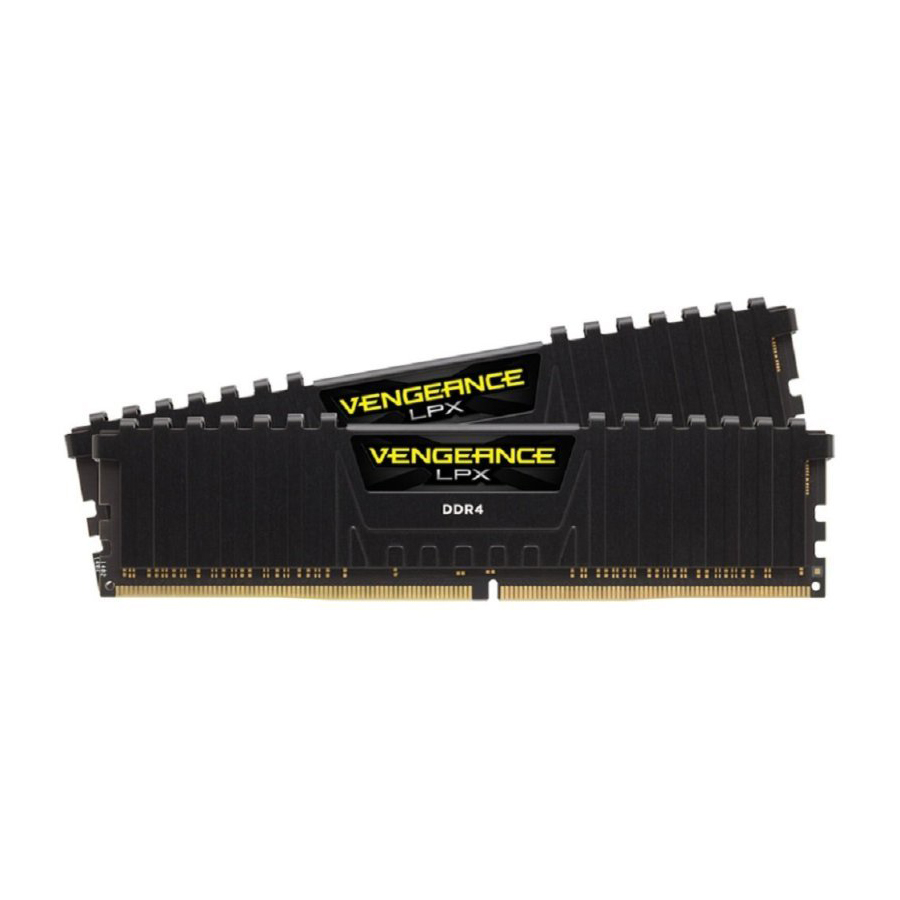
32GB Corsair Vengeance LPX DDR4 3200Mhz (2 x 16GB)
VENGEANCE LPX memory is designed for high-performance overclocking. The heatspreader is made of pure aluminum for faster heat dissipation, and the eight-layer PCB helps manage heat and provides superior overclocking headroom.
| Storage Capacity | 32GB (2x16GB) |
|---|---|
| Memory Speed | 3200Mhz |
| Latency Timings | 15-17-17-35 |
| Technology | DDR4 (Dual Channel) |
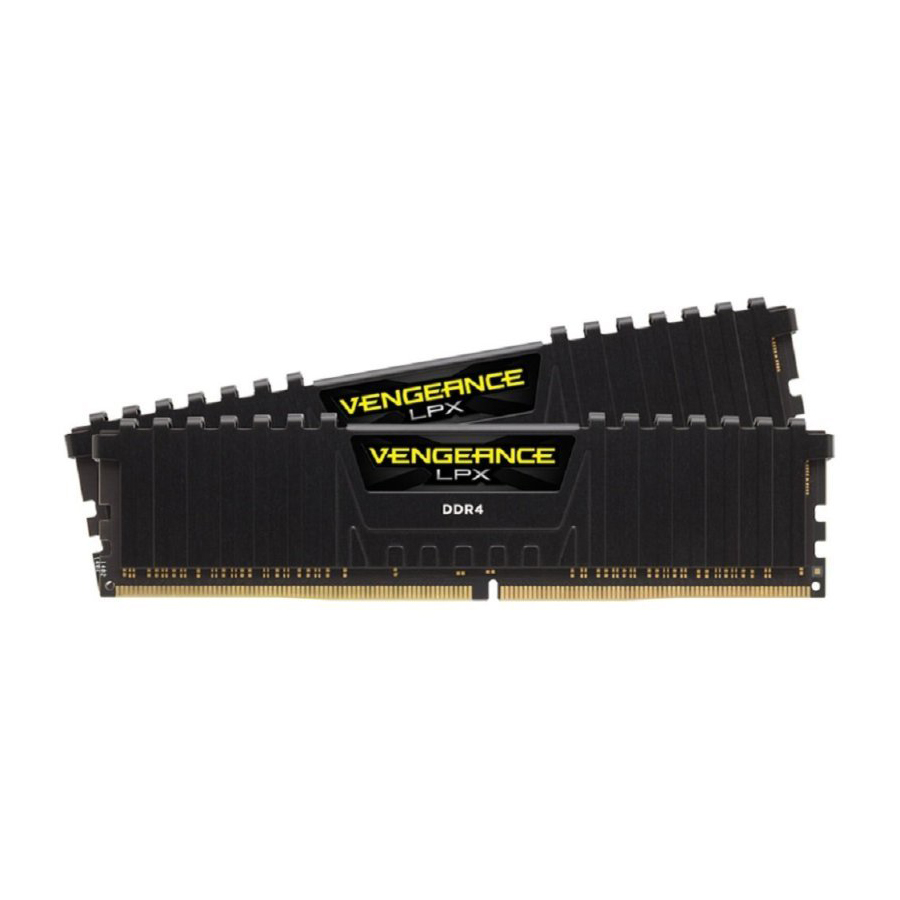
32GB Corsair Vengeance PRO RGB DDR4 3600Mhz (2 x 16GB)
CORSAIR VENGEANCE RGB PRO Series DDR4 overclocked memory lights up your PC with mesmerizing dynamic multi-zone RGB lighting, while delivering the best in DDR4 performance.
| Storage Capacity | 32GB (2x16GB) |
|---|---|
| Memory Speed | 3600Mhz |
| Latency Timings | 18-22-22-42 |
| Technology | DDR4 (Dual Channel) |
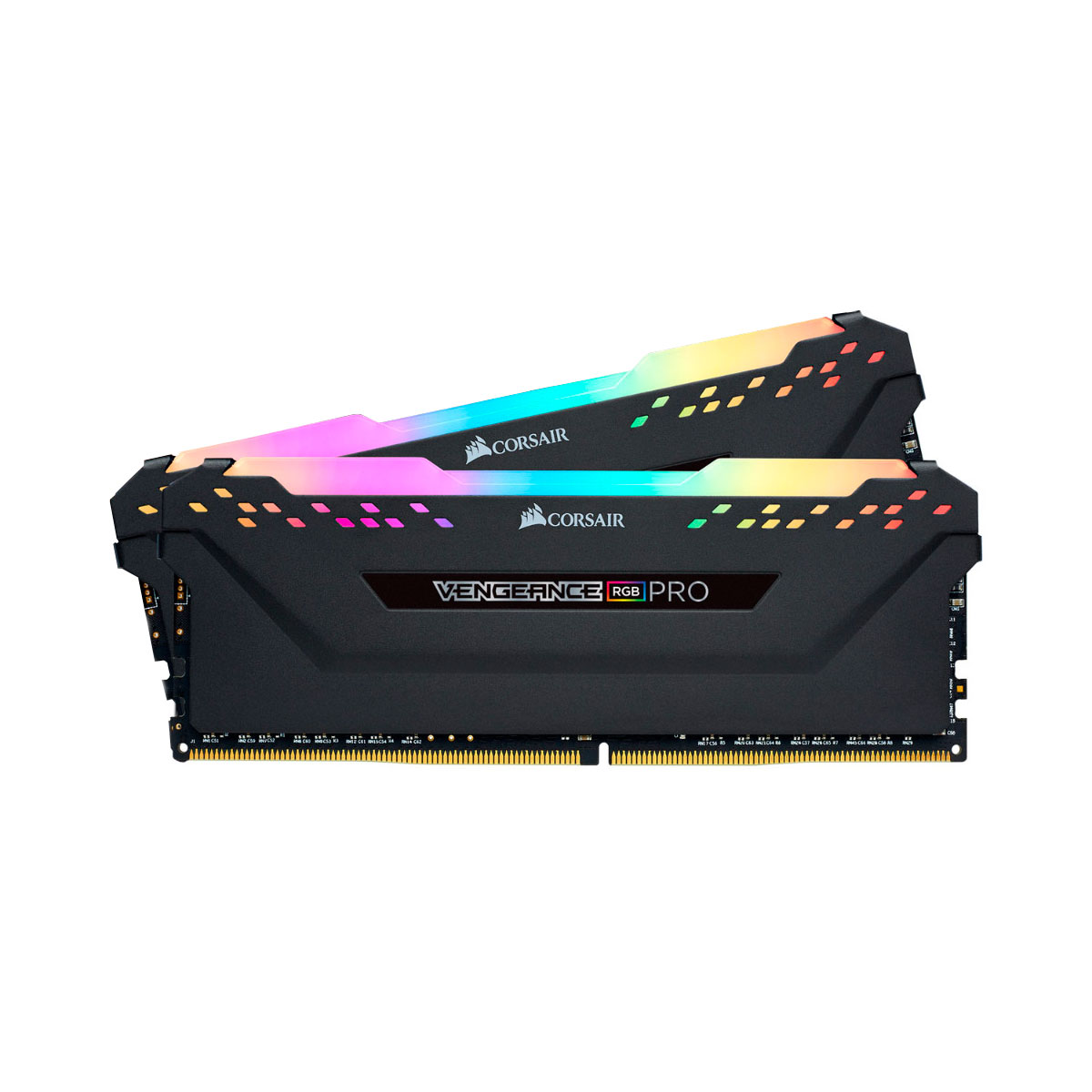
64GB Corsair Vengeance LPX DDR4 3200Mhz (2 x 32GB)
VENGEANCE LPX memory is designed for high-performance overclocking. The heatspreader is made of pure aluminum for faster heat dissipation, and the eight-layer PCB helps manage heat and provides superior overclocking headroom.
| Storage Capacity | 64GB (2x32GB) |
|---|---|
| Memory Speed | 3200Mhz |
| Latency Timings | 16-20-20-38 |
| Technology | DDR4 (Dual Channel) |
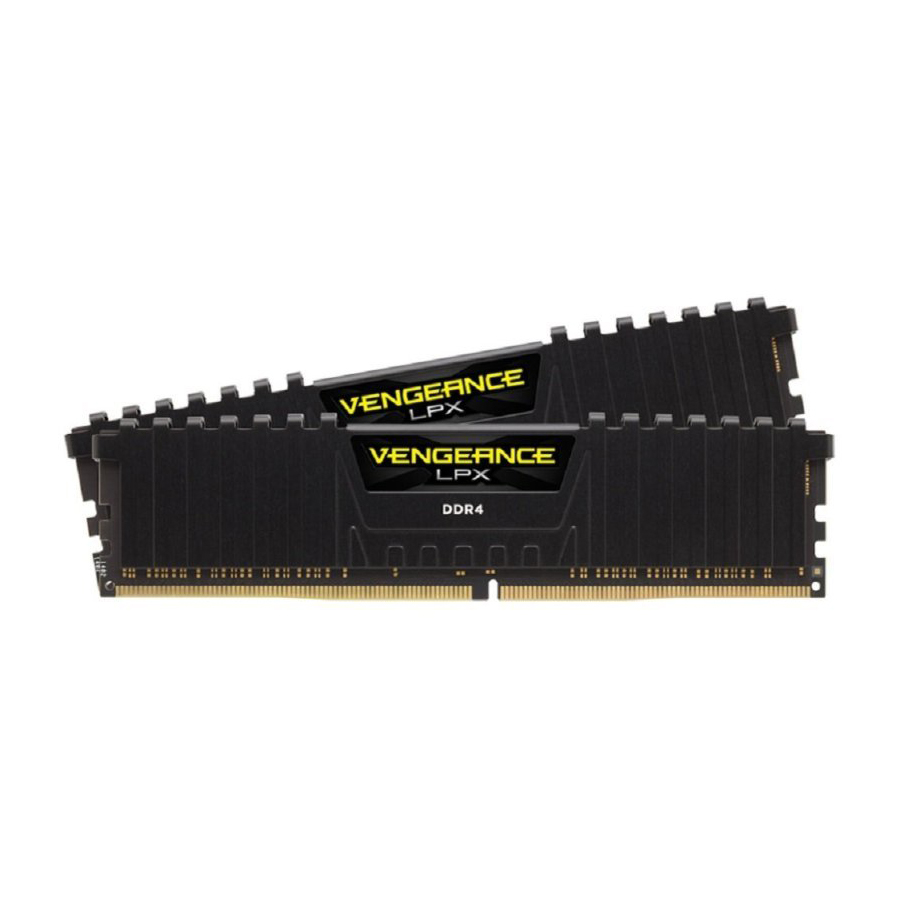
64GB Corsair Vengeance PRO RGB DDR4 3600Mhz (2 x 32GB)
CORSAIR VENGEANCE RGB PRO Series DDR4 overclocked memory lights up your PC with mesmerizing dynamic multi-zone RGB lighting, while delivering the best in DDR4 performance.
| Storage Capacity | 64GB (2x32GB) |
|---|---|
| Memory Speed | 3600Mhz |
| Latency Timings | 18-22-22-42 |
| Technology | DDR4 (Dual Channel) |
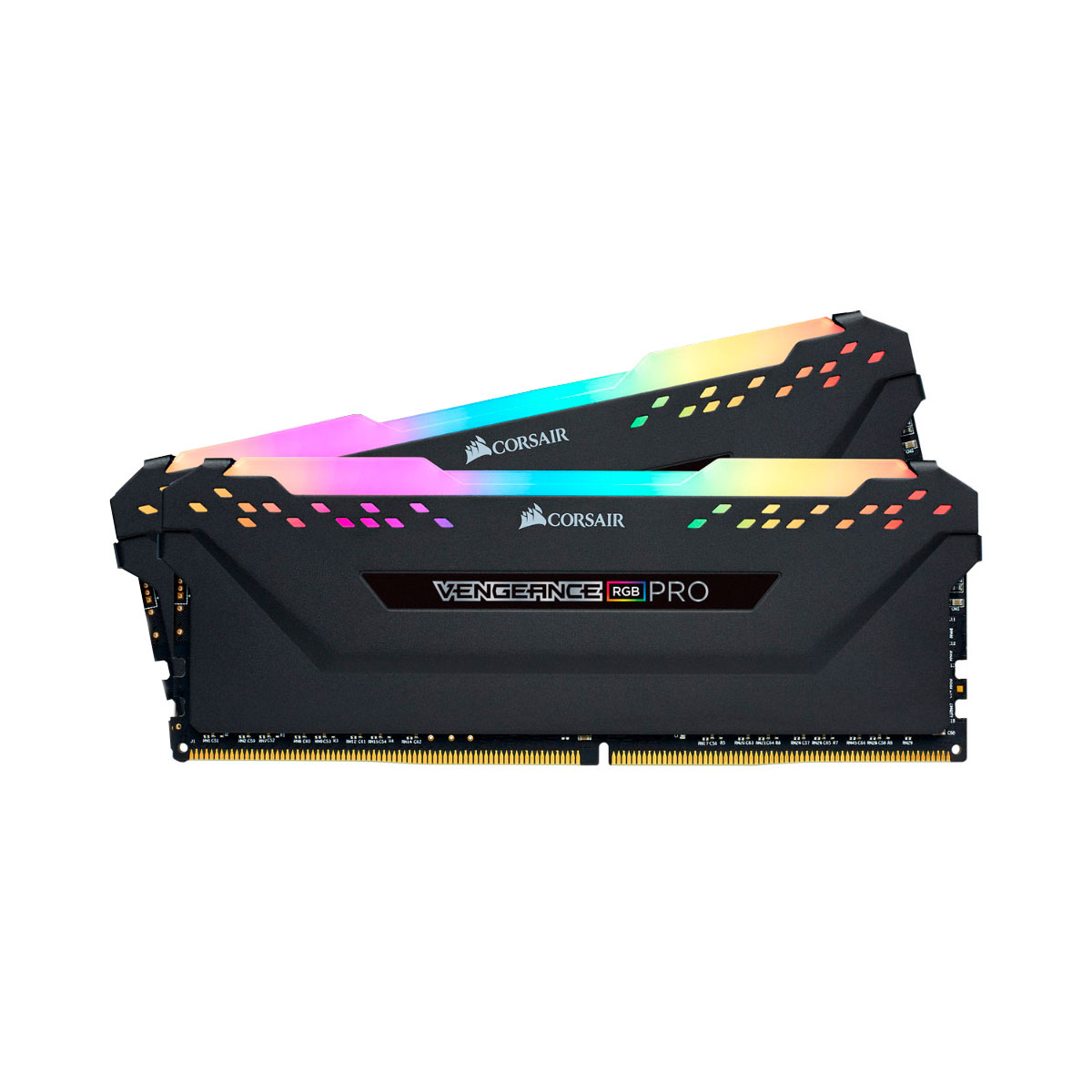
128GB Corsair Vengeance PRO RGB DDR4 3600Mhz (4 x 32GB)
CORSAIR VENGEANCE RGB PRO Series DDR4 overclocked memory lights up your PC with mesmerizing dynamic multi-zone RGB lighting, while delivering the best in DDR4 performance.
| Storage Capacity | 128GB (4x32GB) |
|---|---|
| Memory Speed | 3600Mhz |
| Latency Timings | 18-22-22-42 |
| Technology | DDR4 (Dual/Quad Channel) |
